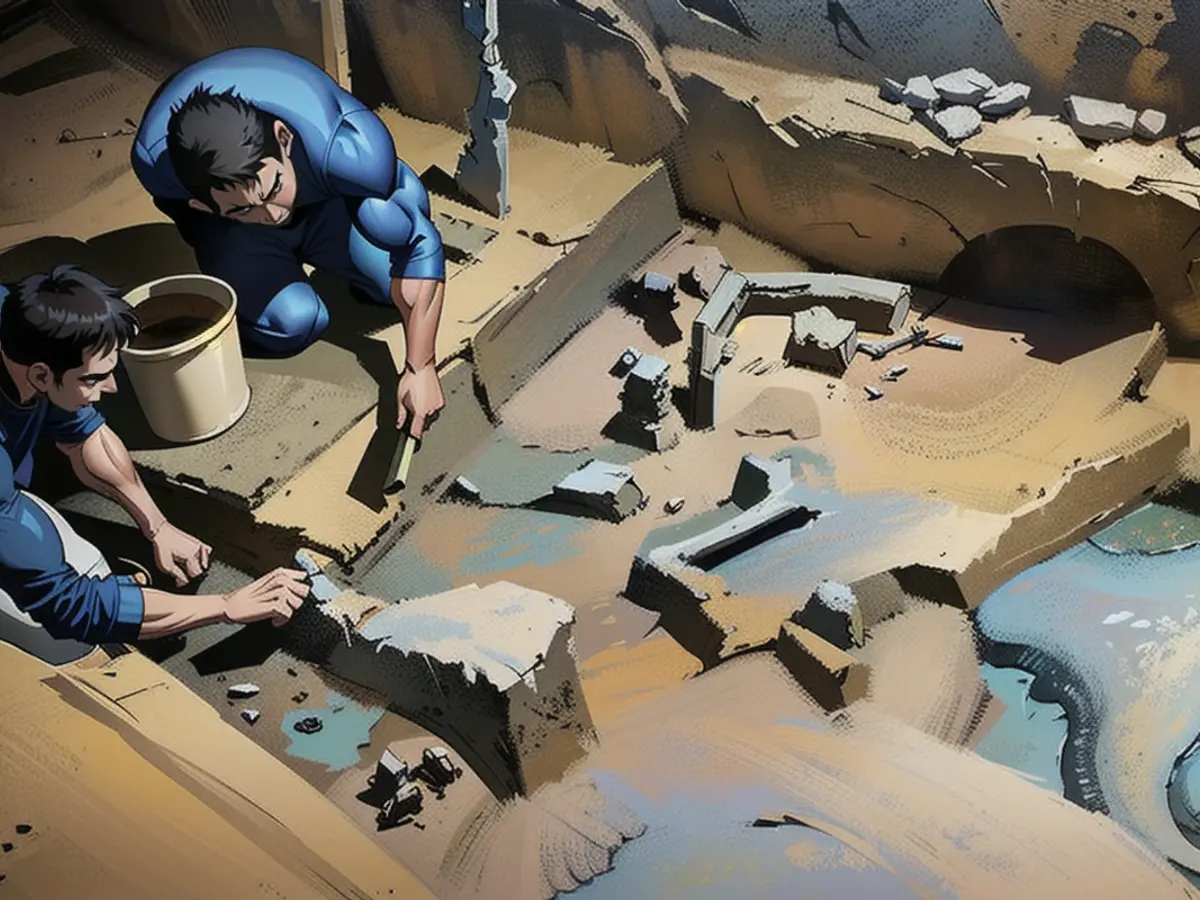Mammoth skeletal remains discovered in a wine cellar.
Unusual finds emerge during a remodeling project at a wine cellar in Austria. The work comes to a halt, and authorities are alerted. A team of archaeologists takes over, uncovering bones that are ancient and hold crucial answers.
During a wine cellar renovation in Austria, the cellar owner stumbled upon mammoth bones. These bones are dated to be between 30,000 and 40,000 years old. When the news of this discovery in Gobelsburg reached the Federal Office for the Protection of Monuments, Austrian Academy of Sciences' (ÖAW) archaeologists began their excavation in mid-May. They believe this may be the "most significant find of this kind for more than a century".
Currently, these experts have unearthed various layers containing mammoth remains. At least three mammoths' bones might be present in this density. "This sort of densely packed layer of mammoth bones is a rarity," said Hannah Parow-Souchon, the head of the excavation. The project is funded by the Federal Monuments Office and the province of Lower Austria.
Was the find location also a death site?
"We know that people hunted mammoths, but we still don't know much about their hunting methods," explains the researcher. Could it be a place where ancient people once trapped and killed these enormous ice age animals? The archaeologists hope this unique discovery will lead to new insights into how people captured the animals back then.
The last similar find in Austria was made nearby in a different wine cellar in Gobelsburg. Based on the Austrian Academy of Sciences, 150 years ago, a thick layer of bones, cultural layers containing flint artifacts, decorative fossils, and charcoal were found in this cellar. The archaeologists will inspect the latest find before handing over the bones to the Natural History Museum in Vienna for restoration.
Read also:
- This will change in December
- Dikes withstand water masses so far - Scholz holds out the prospect of help
- Fireworks and parties ring in 2024 - turn of the year overshadowed by conflicts
- Attacks on ships in the Red Sea: shipping companies avoid important trade route
After analyzing the mammoth bones, it was discovered that some of them showed signs of human alteration, hinting at a possible loss of property for ancient Austrians. This finding raises intriguing questions about potential human-mammoth interactions and the possible existence of a hunting and butchering site in Austria's past.
As part of the ongoing archaeological investigation, experts plan to explore the area for any remaining lost property or artifacts that could shed further light on the human-mammoth relationship in prehistoric Austria.
Source: www.ntv.de







